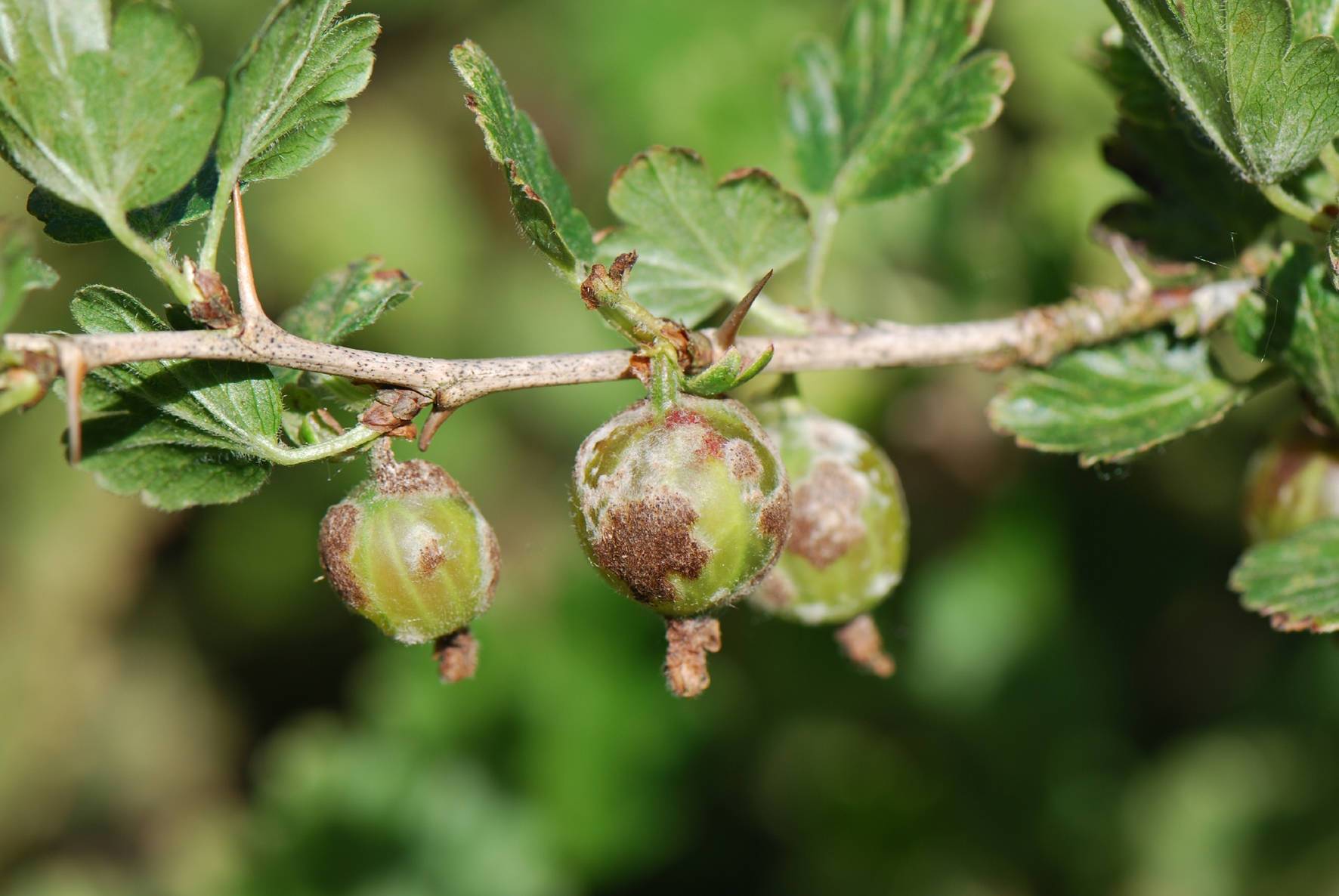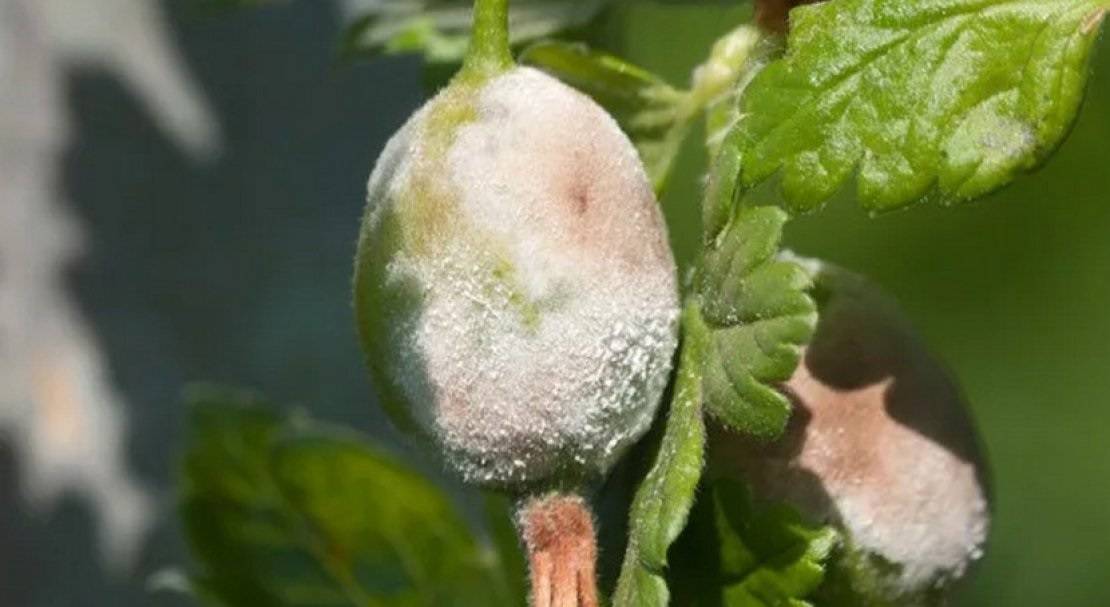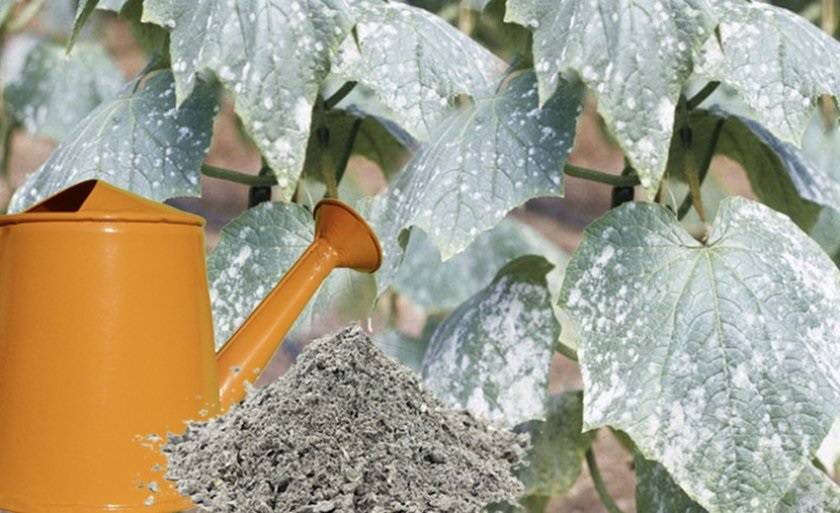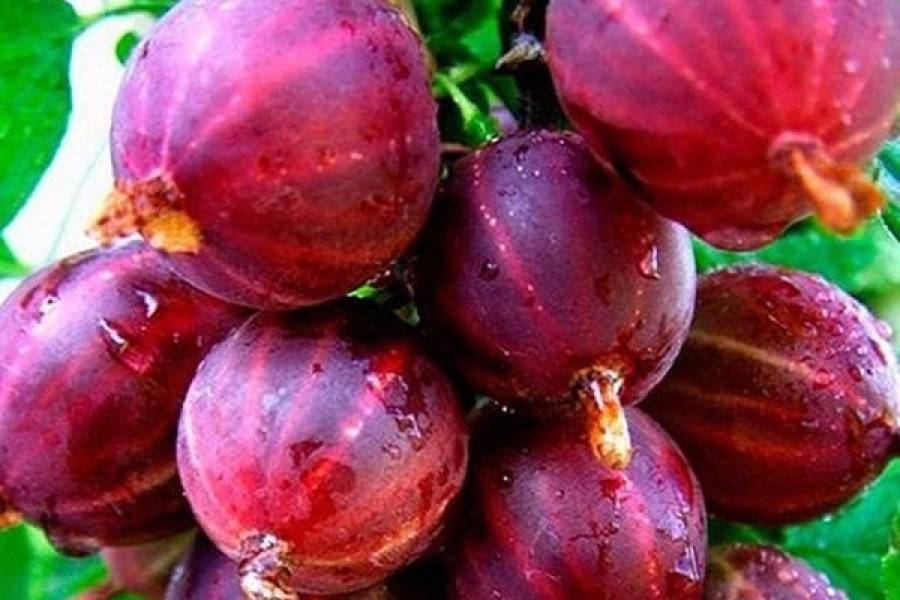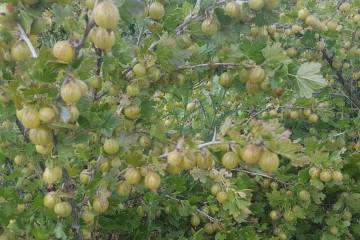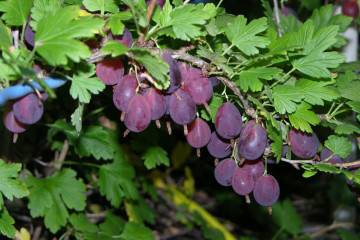Powdery mildew on gooseberries - measures to combat white bloom
Content:
Powdery mildew on gooseberries is one of the most dangerous diseases for a plant. If you do not start to fight it in a timely manner, then not only the entire crop will die, but also the plant itself. The danger of the disease lies in the fact that it develops very quickly, affecting the nearby garden crops. If powdery mildew appears on the gooseberry, control measures should be applied immediately.
What is powdery mildew
Powdery mildew is a fungal disease that quickly spreads throughout the plant, completely destroying it. Spores of the fungus are carried through the air, carried with water, both rainwater and for irrigation, with the tools with which the pruning was carried out.
The leaves of a plant affected by the disease begin to turn yellow, wither, then they fall off completely. In their place, new ones may appear, but they are always wrinkled. White bloom on gooseberries interferes with photosynthesis. If this phenomenon is not dealt with, the bush will die.
Symptoms by which the disease can be recognized
Powdery mildew most often affects the plant in late May and early June. The infection can be determined by the following criteria:
- Fruits, leaves and shoots begin to turn white.
- In the future, the plaque becomes denser, the light tone changes to brown.
- Shoots covered with bloom dry out over time.
- The growth of the leaves slows down, they crumble when touched.
- The fruits begin to cover with a crust, they do not ripen completely, they crumble, remaining still green.
If the gooseberry berries are covered with a white bloom, how to process and how to save the plant, you need to come up with as quickly as possible. This will help save the plant and prevent the spread of the disease to all crops.
Control measures
Powdery mildew has dire consequences for plants. Therefore, you need to start fighting it as early as possible. There are two ways to cure the bush: using folk methods and chemicals.
If the disease is already in a neglected state, then it will not be possible to overcome it only by folk methods. To do this, you will need to use a complex with chemicals. Their advantage is that they only need to be processed once. Natural remedies will have to be used two to three times. It is important to note that at high air temperatures, such means will not help to cope with the problem.
Chemicals
A popular remedy for controlling gooseberry powdery mildew is a solution of copper sulfate. You can cook it yourself. This will require:
- Chop laundry soap - 75 g.
- Dissolve it in five liters of warm water.
- Pour copper sulfate in a volume of 20 g into the resulting soap solution in a thin stream.
It turns out a liquid of a blue shade of a uniform consistency. The solution must be used to process the bushes before flowering. If time was lost, then the bush should be sprayed only when fruit ovaries appear on it.
High efficiency is noted in the fight against powdery mildew in the drug "Topaz". It must be diluted in accordance with the instructions for use. The finished mixture is used to spray the bush after flowering.
Spraying should be done once before flowering, the second time after it. But reviews of experienced gardeners most often only one spraying is enough.
The preparation "Hom" perfectly allows you to get rid of powdery mildew. It is an alternative to Bordeaux liquid. The watering solution must be prepared by yourself. For this, 0.4% of the drug is diluted in 10 liters of water. The resulting product is used before flowering. Just one treatment is enough.
Folk remedies
Choosing the most effective method than to process white bloom on gooseberries, you can use not only a chemical, but also folk methods. The following recipes are most often used to treat gooseberry scab:
- Prepare a solution of a tablespoon of baking soda, laundry soap 75 g and 15 liters of water. Dissolve the soap in warm water, then add soda to the liquid. Water the root zone of the bush with the ready-made solution. The procedure should be carried out twice at weekly intervals.
- At the initial stage of the development of the disease, the bushes can be sprayed with a solution of potassium permanganate. To prepare it, you need to take 1.5 g of potassium permanganate on a bucket of water. This will help wash away any mold that has formed.
- Immediately after flowering, gooseberries can be sprayed with a solution of 200 g of urine in five liters of water. Processing must be carried out at least three times at intervals of a week.
- You can treat the plant with a solution from a fresh mullein. To prepare it, you will need to take one part of the mullein and three parts of water. Mix all components and leave for four days. The resulting solution is once again diluted one to three and used for processing.
You can make a spray solution from ash. For five liters of hot water, 1.5 kg is taken. Soaked ash is left for a day, then it is processed before and after flowering. If it is necessary to carry out the procedure several times, then the interval should be at least a week.
How to prevent the development of the disease
Knowing why white plaque appears, what conditions contribute to this, you can reduce the risk of developing the disease.
Prevention measures
The causative agent of the fungus begins to multiply actively if mistakes in care are made. To prevent the mealy race from attacking the shrub, the following preventive measures are recommended:
- There should be a distance of 1.5 meters between the plants. Gooseberries love well-lit areas. In addition, the fungus itself dies under the influence of sunlight.
- Landing should not be neglected. It is necessary to replant the bushes in a timely manner.
- During the season, two times you need to prune diseased and damaged branches. All collected residues must be incinerated.
- In the spring, it is recommended to water the bushes with a solution of manganese or soda. For two liters of water, two tablespoons of soda are taken. Means not only destroys fungi, but also the eggs of any insect pests.
- In the fall, they dig up the soil at the roots. This is necessary so that the spores of the fungus appear on the surface and freeze in winter. Additionally, you can treat the soil with the preparation "Fitosporin-M".
- It is important to ensure that the branches and fruits of the gooseberries do not touch the ground.
- Spraying plants with a solution of wood ash is considered a good prophylaxis. To prepare it, you need to pour 1 kg of a bucket of water. The mixture is infused for four days, then 30 g of crushed soap is added to it. Spraying is done three times with an interval of two days.
- As a preventive measure, you can use an infusion of tansy. 10 liters of water will require 300 g of the plant.The product is infused for one day in a dark place. Then it must be boiled over low heat for two hours. You can use the resulting product only after it has cooled completely.
Conditions unfavorable for the development of the disease
The risk of developing the disease can be reduced by creating unfavorable conditions for the fungus. First of all, it is necessary to provide the plant with full and regular care. If the gooseberry is sick and weakened, it is susceptible to fungal diseases.
Regularly you need to inspect the leaves and shoots so as not to miss the moment when they turn white. It is important to remove damaged and old branches in a timely manner, to avoid increased plant density. It is necessary to remove fallen leaves, since the pores of the fungus can be stored in it.
Disease-resistant gooseberry varieties
Breeders have bred special varieties of gooseberries that will be resistant to the development of fungal diseases. To avoid unwanted contamination, it is recommended to plant them on the site.
Immune varieties
Varieties that are immune to disease include:
- Anniversary. A shrub of short stature, with yellow and sweet fruits.
- Kuibyshevsky. A medium-sized shrub with large fruits that can weigh up to 8 g.
- Gingerbread man. This gooseberry is not only disease-resistant, but also high-yielding. Very easy to clean.
- Ural grapes. It belongs to the early variety. Differs in bright green fruits with very sweet pulp;
- Senator. The variety is resistant to drought in summer and frost in winter, it loves moisture and sun.
- Houghton. It will delight you with abundant fruiting, the berries are bright burgundy, small in size.
Varieties with less susceptibility to disease
Among the varieties of gooseberries, there are those that are less likely to get sick. Their main feature is the absence of thorns. These varieties include:
- Chernomor;
- Naughty man;
- Russian;
- Golden light.
Knowing what to do if the gooseberry berries are covered with a white bloom, you can easily cope with the danger to the plant. Experienced gardeners recommend using several methods of combating fungus at once. If one tool is not suitable, you need to replace it with another, choosing the most suitable option.
